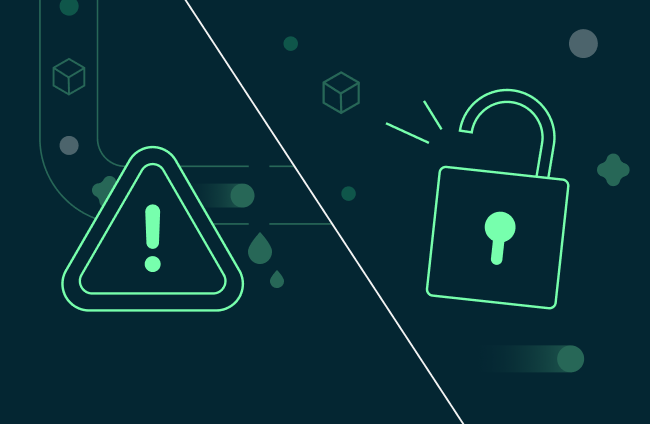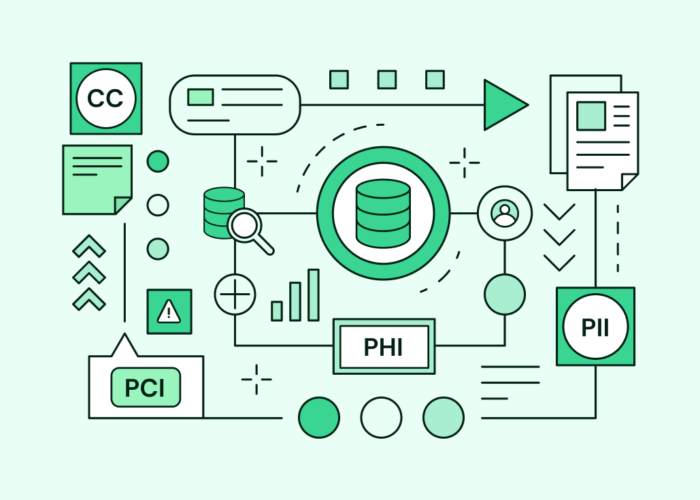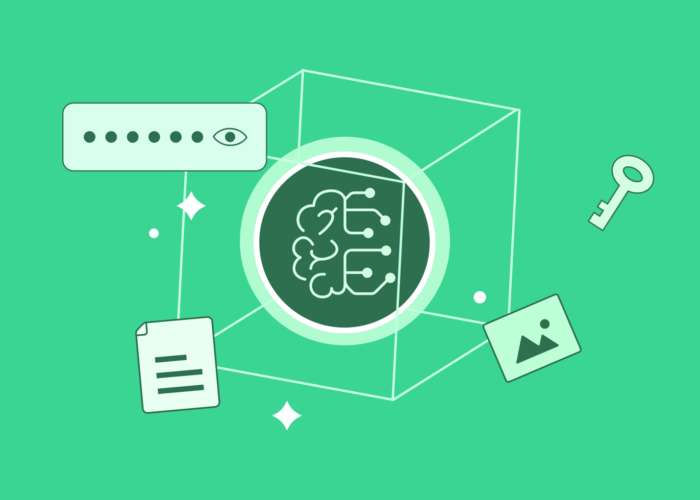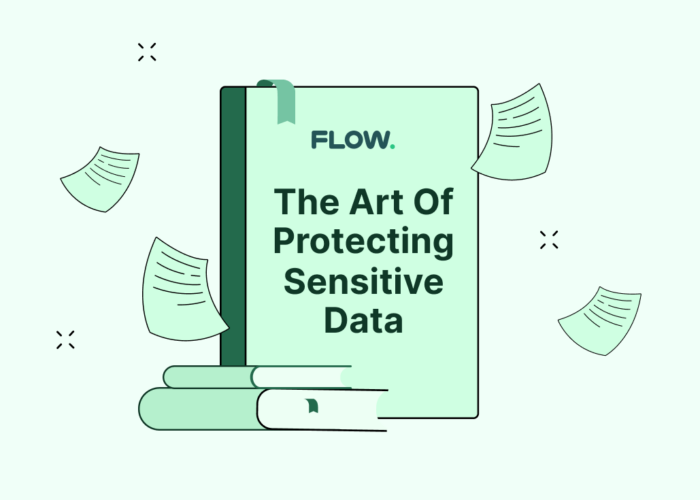Data Leaks vs. Data Breaches: Understanding Data Threats


Two of today’s most prevalent threats to organizational data are data leaks and data breaches. Look no further than the recent “mother of all breaches” – which saw 12TB of user info leaked from across several major apps and services – to understand the degree to which such risks can wreak havoc.
However, data leaks and data breaches are all too often treated as synonyms. And while they do have similarities, to classify them as one-in-the-same reflects an insufficient understanding of the true nature of these threats and in turn an insufficient understanding of how to properly protect against them.
This blog will illuminate the differences between data leaks and data breaches, dive into their common causes, and explore proactive ways to prevent such threats from occurring in the first place.
Data Leaks and Data Breaches: Definitions and Distinctions
A data breach refers to instances where an unauthorized person, typically a hacker or other bad actor, intentionally accesses sensitive data, usually with the intent to steal, sell, or hold hostage whatever critical data they can get their hands on.
Data breaching hackers will exploit vulnerabilities in an organization’s digital environment or tech stack, giving them unfettered access to confidential information such as financial records, user details or personal identifiable information (PII), company secrets, and more. It is crucial for organizations to secure themselves against data breaches, as the pervasiveness and cost of such attacks are continually rising.
Alternatively, data leaks occur when sensitive data is inadvertently exposed, typically due to negligence or oversight, and can threaten data both while it is at rest in a database or while in motion between data storage locations. As the name suggests, data leaks do not necessarily come about through the efforts of a bad actor, nor do they always result in theft or ransom – rather the data is simply compromised by being left vulnerable. Due to their often-accidental nature, data leaks are particularly difficult to detect and remediate, making them an equally serious threat to organizations’ security.
Common Causes of Data Leaks
The risk of data leaks is typically due to internal errors on the part of the organization to whom the data belongs. This can include misconfigured databases, unpatched infrastructure, unprotected servers, or insufficient runtime security.
Counterintuitively, there are cases where data leaks occur when data that was already compromised due to a data breach and is made accessible on the dark web, or even on approved public data stores, and thus becomes compromised beyond the impact of the initial leak.
One common cause is human error. This often occurs when an inexperienced or negligent employee misuses data, particularly while using external applications, where they might input or transfer sensitive data without understanding that they have left it exposed. Generative AI has heightened this concern – it is all too easy for an employee to input PII into a tool such as ChatGPT without realizing they’ve entered that information into the entire AI model database.
Another issue arises around external applications such as third-party SaaS platforms, which either require inputted employee data or are given access to organizational data. This leaves all such connected data, no matter how secure on-prem, vulnerable within the third party platform.
In fact, many organizations have more unprotected data than they realize, but little is done to secure it against leakage. Unfortunately it is all too often only seen as an issue once the data falls into the wrong hands, at which point it is already too late to be rectified. While data leaks can be harder to detect than data breaches due to their passive or accidental nature, organizations can get ahead of them before hackers take advantage of the situation
Common Causes of Data Breaches
There are a wide variety of data breaches, as they can occur during any kind of cyberattack. And as the variety of cyberattacks is continually growing, so too are the possible avenues to a data breaches.
Compromised passwords are among the most basic and simple causes. When employee passwords are compromised, whether through negligence, over-simplicity, or through a hacker obtaining employees’ PIIs (often through phishing campaigns), it is easy for bad actors to gain access to company data through direct channels and network access without raising any immediate security flags.
Even as education around cybersecurity best practices grows, social engineering scams are still effective at lulling employees into inadvertently sharing log-in details. For instance, a phishing scam may introduce a convincing but fake internal company site which asks for employees to provide login information. Fake emails or website prompts can also result in malware attacks, resulting in data breaches.
Insufficient security in software applications is another common vector for hackers to steal company data. Indeed, most enterprises today employ some (if not many) third-party software applications for everything from employee management to payrolling to cloud storage. Even when a company’s network infrastructure or databases are internally secure, it is harder to ensure that all of the software applications in use are also fully secured. When these applications are given access to an otherwise secure internal network, their vulnerabilities offer an easy back-door through which hackers can access organizational data.
Strategies to Minimize the Risk of Data Leaks and Data Breaches
It will always cost a company less to spend on robust security measures than it will to recover stolen or ransomed data or to patch vulnerabilities that have already been compromised.
Accordingly, the best practice for minimizing the risk of data leaks and data breaches is to focus on proactive prevention rather than passive patching or post-leak/breach triage. To do so, companies must do more than rely solely on risk analysis and posture management, security approaches which afford risk awareness but don’t block threats or reinforce security gaps.
Organizations must also ensure that security measures are in place for data in all its forms and across all environments — finding ways to secure their data during runtime as well as when it is static. All too often, companies focus solely on securing their data while it is at rest in a database. Just because a database is relatively free of risks and the data therein relatively secure, that same data can be exposed to leakage or vulnerable to breaches when moving between data storage locations.
As human error is a common risk for both data leaks and data breaches, security leaders should enforce clear organizational policies around data protection and update these policies as threats evolve or new applications make their way into the tech stack.
Flow Security: Detection and Prevention of Data Leaks and Breaches
While data leaks and data breaches are two distinct threats with different security necessities, prevention of both should ultimately be part of an organization’s wider active prevention strategy
Flow Security, the first data runtime protection platform, offers a proactive solution that is capable of providing organizations with protection, prevention, and enforcement for both data leaks and data breaches. Flow’s solution discovers, classifies, and secures unprotected data that organizations may not have even known were exposed in the first place.
Flow security analyzes the actual data payload– a dynamic approach that protects data at every stage of its lifecycle. The solution secures data at rest and during runtime, broadening the level of data control and security for all instances where data might be susceptible to leaks or breaches.
Data is always on the move, in, out of, and within corporate networks, making the risk of data leakage or exposure greater than ever before. By ensuring that organizational data is always secured in all forms and environments, Flow Security leaves no data unprotected or unaccounted for, and minimizes the potential of both breaches and leaks.


